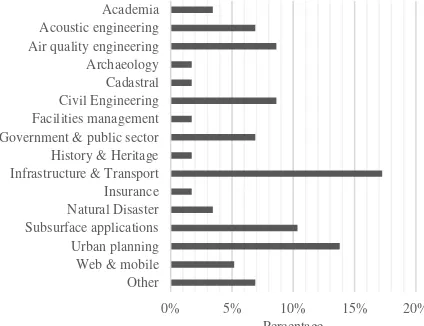isprs annals IV 4 W5 125 2017
Teks penuh
Gambar



Garis besar
Dokumen terkait
In general, available applications provide estimated arrival time to stops, but it would be better to know the current position of buses to inform the users with
Data ambiguity and invalidity can cause significant expensive issues in the cadastral domain (e.g. legal disputes). Therefore, an automated data validation
The enhanced smart point cloud developed model allows to bring intelligence to point clouds via 3 connected meta-models while linking available knowledge and classification
Through the development of a methodological framework based on the second-order logic formalism, we define a set of functions and propositions among and between two collections
Resuming the big data concepts and techniques from above and postulating a sound mathematical approach for a topologically consistent geo-spatio-temporal model, in a second step
Some of the benefits of LandXML capture as a complete dataset for the entirety of New South Wales are that it eliminates duplication and effort, is geospatial, and captures all
To satisfy the requirements of PAS 1192-3, as well as to offer the potential for an integrated Asset Management System to the IM, the Crossrail technical information team
The Industry Foundation Classes (IFC) 3 standard is an open data model used in the Building-information modelling (BIM) do- main for the exchange of construction models, often